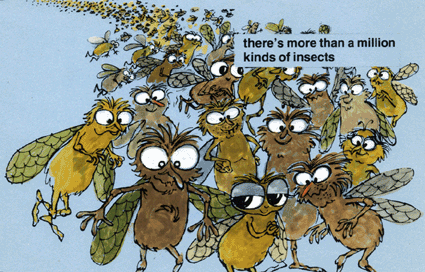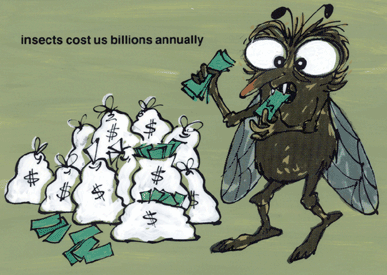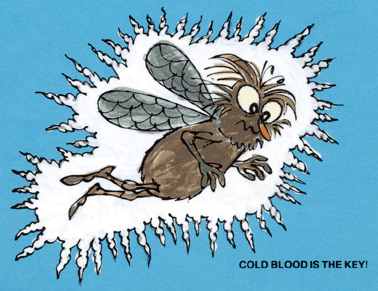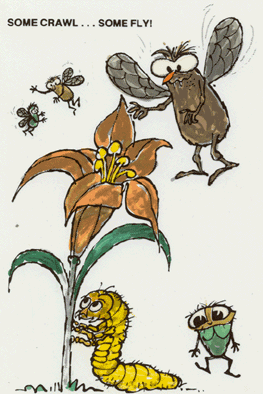|
When people ask, "How many insects are there?"...they are usually referring to two different questions: how many KINDS of insects...and what is the total number of insects in the world? An honest answer to both questions is: Nobody knows exactly.
At last count, the KINDS of insects exceeded one million. The number grows daily as entomologists continue to identify and classify new kinds. So, any claim to have all the answers to insect control is not justifies. Historically, U.S. industries have tolerated insects in production areas. This is a costly business practice. Sometimes they are not aware of the problem...other times they just do not know what to do, because the method of control they have tried didn't work. Insects cost the U.S. economy an estimated $12 billion annually. This may be an understatement. There are many unreported cases of contamination and destruction by insects...we must do a better job of control. What we've done in the past to control insects is no criterion of standards for the future. Therein lies the purpose of this discussion. | |
|
There a more than a million kinds of insects 
|
Insects cost us billions of dollars 
|
|
The Common Denominator | |
|
|
First...insects are cold-blooded. However else a Fly differs from a Roach...they both have clod blood and therefore are extremely temperature sensitive. In fact, we find the perfect temperature of the insect world to be 82.4¡F (28¡C). Not much different from the human comfort zone. They like humidity too, 55% relative humidity
(RH) is about perfect. Otherwise, the insect will dehydrate much the same as people, only more so.
Second...the insect world is divided into two groups, those that crawl and those that fly. Crawling and flying insects fall into various sub-groups, each with its own life cycle. To design an effective insect control system we must first understand factors influencing the insect. During the past 20 years, I've inspected every kind of commercial and industrial facility, na d have yet to find one completely free of insects. Surprising? It shouldn't be, for they appear to be everywhere. To complicate their detection, even a trained eye cannot see micro flying and crawling insects that inhabit most food, pharmaceutical and packaging plants. |
|
Crawling Insects | |
|
|
At this time, not much space will be devoted to crawling insects. It isn't that they aren't important...in fact, crawling insects are just as nasty and carry disease and destruction as do their flying cousins. The roach is living testimony. Certainly, no living thing has resisted the control efforts of man more. It remains about the same as it was 100 million years ago. To suggest that crawlers can be controlled around buildings through the use of residual insecticides, and move on to our discussion of flying insects, is not sufficient coverage, even in this brief discussion of crawlers. Let's take a moment to examine these four areas for control of Crawling insects: Treat exterior grounds, insecticide spraying, Sanitation and Fumigation. |

